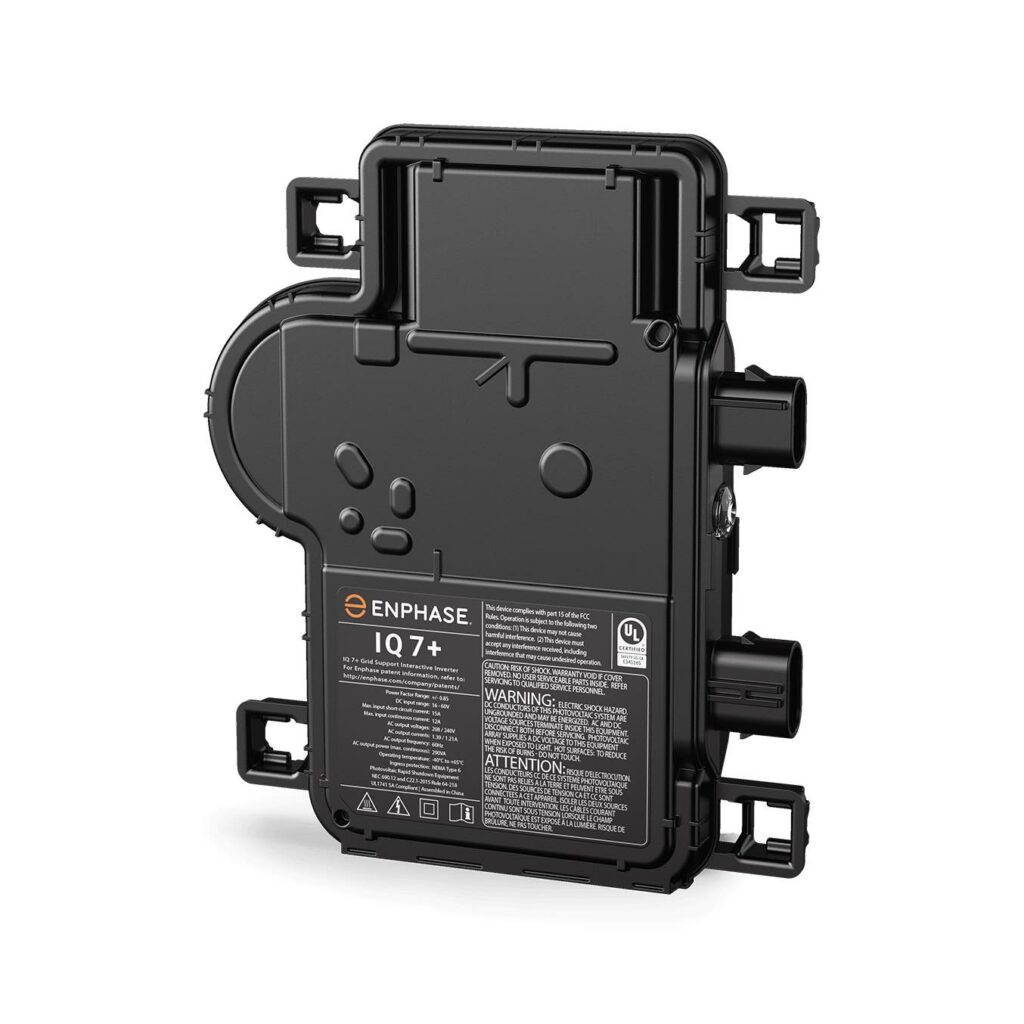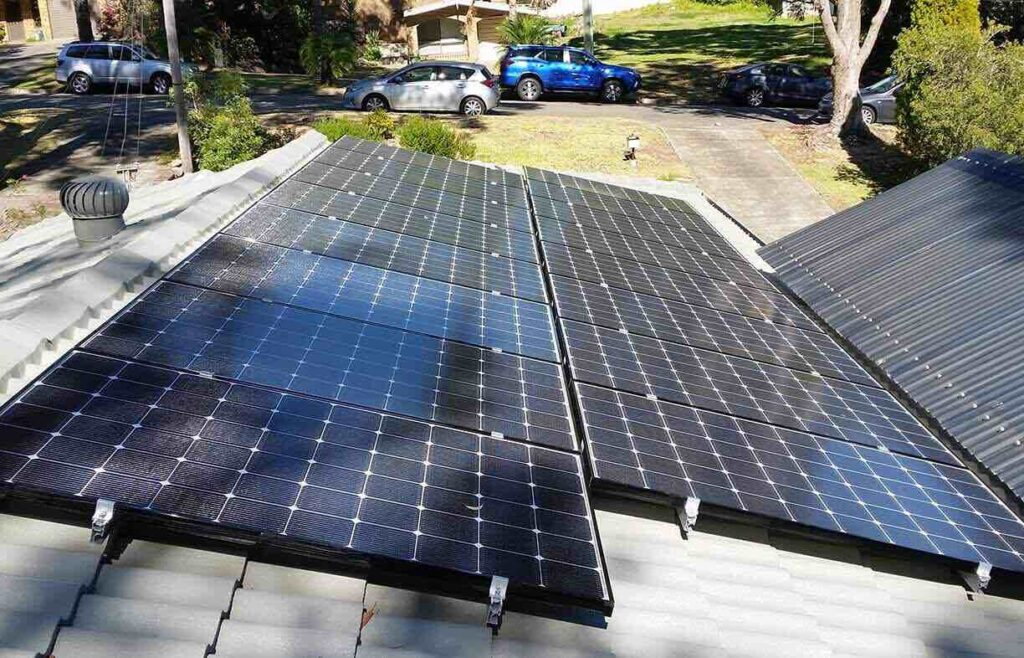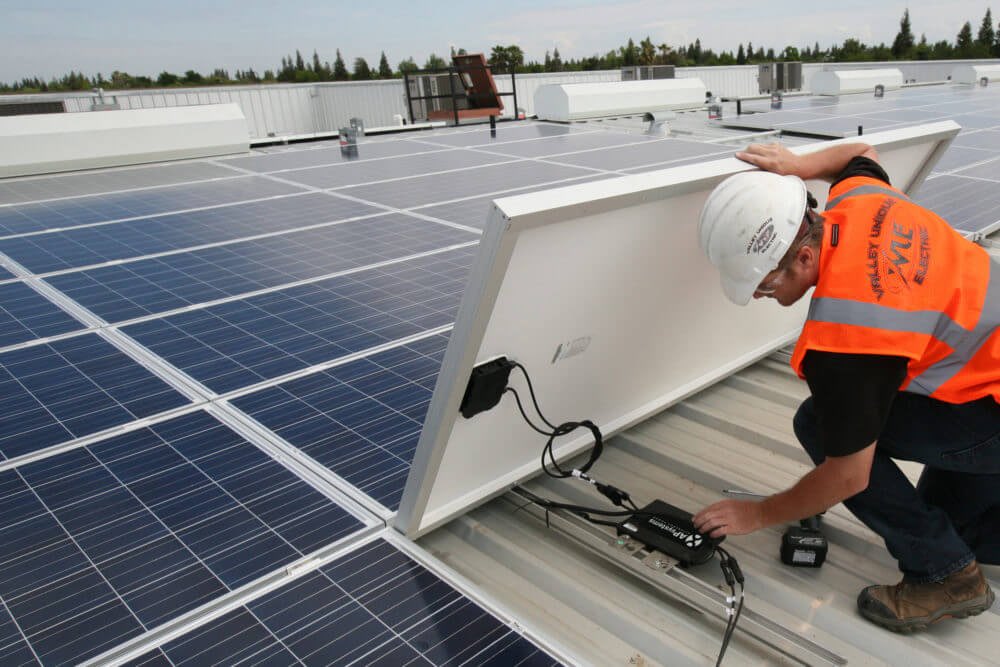Last update March 26th, 2025 at 11:36 pm
There are many positive benefits of microinverters. But let’s start by understanding the role of the inverter in a solar energy system. A solar inverter is able to convert the direct current (DC) output produced by a solar panel system. It converts this into alternating current (AC) which can be transferred to the public grid.
There are many types and sizes of solar inverters. One of the most relevant for private households is the microinverter.
Microinverters are especially beneficial for homeowners who own a smaller solar system or starter system. It is particularly suitable for those who struggle with tricky roof orientations or shading.
Here you can learn more about the benefits of a microinverter. And why it might be the right choice for you.

Some known benefits of a microinverter
Buying a microinverter solar system might be more expensive than a more traditional central inverter system. But despite the high initial cost, you will experience many benefits of a microinverter choice.
The cost is in many ways justified by the benefits related to warranty, noise, effectiveness and other things. Let’s take a look at some of the best reasons for buying a microinverter.
A primary benefit of a microinverter is that it can be optimised individually
A typical central inverter will only be able to optimise the whole solar energy system as a unit. This means the optimising rate will be defined by the weakest link. If only 9 % of the panels are exposed to shade or dirt this obstruction could lead to a 54 % system power decline in total.
A microinverter on the other hand optimises for every single solar panel – instead of the solar system as a whole. Because of this, the microinverter makes it possible for every single solar panel to reach its top potential.
With a microinverter, you don’t need to worry about the entire system failing. This happens on a standard system if one of the panels is exposed to shade. This also includes dirt or similar obstructions to the sun’s rays. With a microinverter, if one of your solar panels stops working, the rest of the panels will be unaffected and still produce electricity.

Another benefit of a microinverter is that it will find the ideal voltage for your system
The main benefit of choosing a microinverter is that the unit will find the optimum voltage for your system. The inverter will then generate the maximum VPP, also known as the voltage peak power.
Smart features
A common challenge for solar cell systems is the need to adjust the voltage to the maximum power output. This means that the solar panel’s performance rate is dependent on the inverter’s voltage load.
With a Maximum Power Point Tracking (MPPT) feature your microinverter can track the ever-changing temperature of the cells. This includes the intensity of the sun in real-time during the day.
The MPPT will, in other words, find the optimal voltage or maximum power point at all times.
Easy to expand if needed
Another benefit of having a microinverter is that the system is easier to expand.
If you have a central inverter, you might also have to install another inverter. Since most central inverters are delivered in a given size. You might have to install an inverter that is bigger and more expensive than it has to be.

Another benefit of a microinverter system is better warranty terms
When buying microinverters, you will usually benefit from better warranty terms. A microinverter is not exposed to the same amount of heat and power as the typical central inverter. Because of that, the micro inverter tends to be more long-lasting.
In Australia, you can easily find microinverters with a warranty of 20 to 25 years. A typical central inverter on the other hand usually comes with a warranty of 10 to 15 years.
High level of safety
In general, a microinverter is a safer choice than a central inverter. One of the main reasons for this is that the microinverter does not use high-voltage direct current wiring. This not only makes the installation process safer but also your day-to-day use of the system.
With a central inverter, a series of solar panels will typically produce 300 to 600 volts of direct current. This amount of current can be really dangerous, in case of an electrical system failure.
Silent operation
Because of their smaller size, microinverters will also produce less heat than the regular central inverter. This means that the unit does not need an active cooling system. Therefore the operation of the microinverter is silent compared to central inverters.
The silent operation makes the microinverter a popular choice among private households. It makes the inverter more comfortable if it is stationed near the people living there.
Do you want to learn more about solar energy? Please take a look at our other useful and relevant guides!